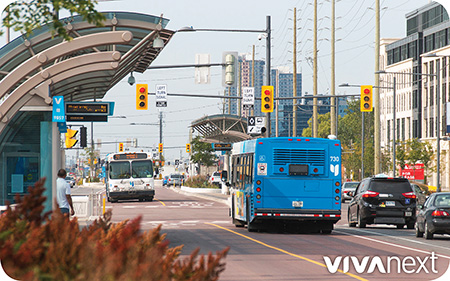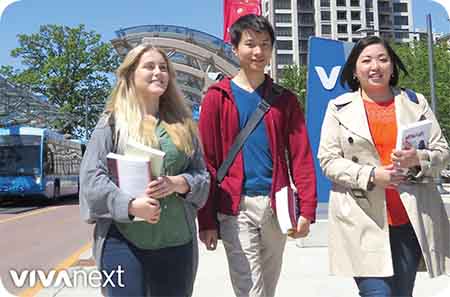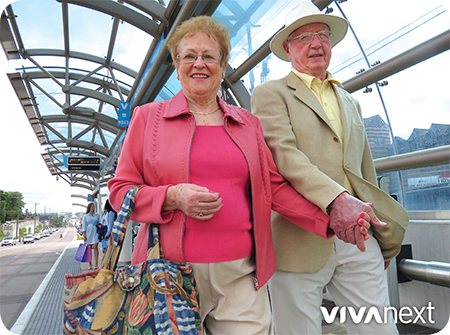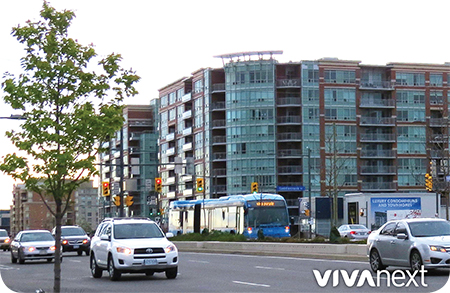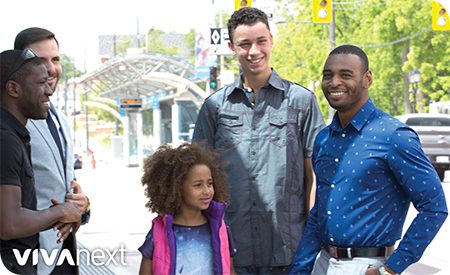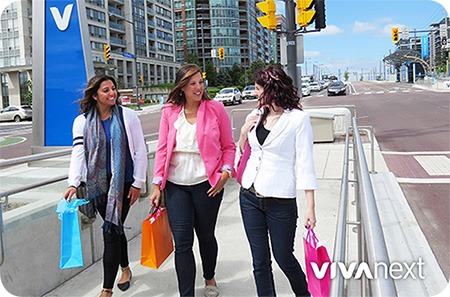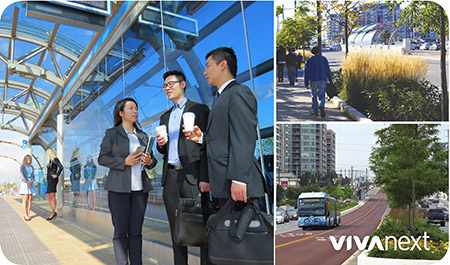
With the summer months now behind us, the rapidway project in the Bathurst & Centre community continues to make great progress, with all five vivastations under construction, utility upgrades complete, sidewalks and boulevards well underway, and base and final paving making great headway.
With the rapidway scheduled to open for service by the end of 2019, it’s a good time to remember what the goal of the project is: to design and deliver rapid transit projects that attract, move and connect people to York Region’s urban centres.
This goal translates into what’s called a “triple-bottom-line” contribution to our community – specifically social, environmental and economic benefits. They include:
- Urban transformation. Emerging along the length of our rapid transit network, traditional suburban development is transforming into more compact urban neighbourhoods that include retail, entertainment, dining, places of worship, residential and offices. As the population of York Region grows and increases in density, we are building transit to service this population.
- Connections. The new sections of rapidway will consist of 5 new vivastations along Bathurst and Centre, connecting people from Thornhill to Concord, Woodbridge and Vaughan Metropolitan Centre and the subway to Toronto. It will also connect people to the rest of York Region via the Richmond Hill Centre Terminal at Yonge Street and Highway 7, and the future Yonge Subway Extension.
- New businesses. As new developments provide new housing choices, the area attracts new employers – businesses that want to be located near transit in order to draw on a well-educated workforce.
- Less driving, more moving. As York Region welcomes this new transit and cycling infrastructure and an increasing population, the result is more transit riders and reduced dependency on cars. Less time spent behind the wheel of a car can have great benefits to long-term health because people walk, run or cycle more – for exercise and to get from place to place.
- Cleaner air. Every busload has the potential to replace 70 cars, and fewer cars on the road means reduced carbon emissions.
- Building transit where the people are. The most popular transit routes go where people want to get on and off. People want to get to where the action is, so routes are planned where shopping, services, jobs, and higher-density housing is already along the way. The Bathurst and Centre neighbourhood is a perfect example of this as the community has a multitude of shops and amenities, multi-story condo buildings and residential streets – and busy Viva routes already service the community.
In York Region, a number of urban centres like Bathurst & Centre are evolving into mixed-use communities. At vivaNext, we’re supporting that change by building a fast, convenient rapid transit system. As part of the Centres and Corridors initiative, York Region has a vision and best practices for new mixed-use development to make sure that it gets built in areas which are supported by higher levels of transit.
For information about ongoing vivaNext projects, be sure to subscribe to email updates, and follow us on Twitter. You can also follow us on Instagram, YouTube and Facebook. Questions or comments? Comment below or email us at contactus@vivanext.com.

